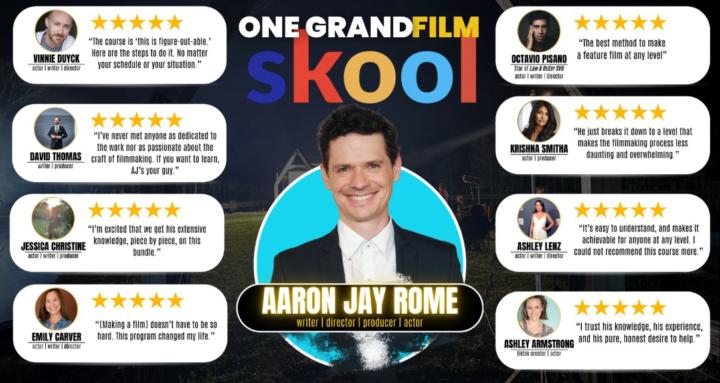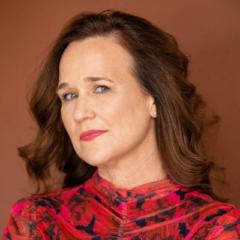Q&A Call Starts NOW!
Jump in and say hello! Bring what ails you, and hopefully I can A your Q. https://www.skool.com/ogfilmskool/calendar?eid=a7eea110238e4a26ab2cc8d6c6e2db5f&eoid=1758924000
1
0

Q&A Call Tactical Recap 9/19/25
Last week’s call was all about staying scrappy, protecting your voice, and building a body of work that attracts champions — not waiting for permission. Here are the highlights 👇 Watch the Whole Thing Here. 🎥 Proof Projects Aren’t Just for One Genre Jennifer asked if her “medicinal writing” process could be a Proof Project. Absolutely. Proof Projects don’t have to be crime dramas or docs — they’re any 75-90 min story that proves you can finish and showcase your unique voice . 💡 Turn Real-Life Expertise into Narrative Fuel Your day job or lived experience is gold. Change names, tweak details, and build a fictional spine around it. Like Fargo (“all true… except the names”), you can protect privacy and still lean on real insight — especially if your topic is timely or social-impact-driven . 📏 Feature Length = Legitimacy Festivals technically count 40 min as a “feature,” but the real target is 75-90 min. That’s the length reps, buyers, and programmers take seriously . 🎯 Budget Where It Matters Augustin’s second feature sparked a big convo: don’t over-fundraise early. Keep hard costs to gear, insurance, food, and short shoot days. Use gear that records clean audio (like affordable 32-bit float lavs) instead of paying full crews you can’t afford yet . 🤝 Find Hungry Collaborators For first or second films, partner with people at the same career stage. Build a “tribe” that grows across multiple projects. Later, as budgets rise, everyone levels up together . 🚦 Festival Wins Aren’t Overnight Tarantino scrapped a whole first film before Reservoir Dogs. Spielberg shot Amblin after smaller shorts. Baker went from a $50K flop to a $3K microfeature (Take Out), which opened the door to Tangerine and beyond. Proof builds trust — then budgets climb . 📢 Marketing = Part of the Job Even indies need saturation. Keep budgets ultra-low so one champion — a Sid Sheinberg for you — can turn a small success into a career move. Read Kevin Kelly’s 1,000 True Fans if you haven’t .
Tactical Q&A Recap - Friday Sept 12th
This week was about getting unstuck: turning a stage show into a feature, locking the legal/LLC steps without spinning out, and packaging projects so you can actually raise money (without waiting two years for a “maybe”). 🎬 PROOF BEATS PROMISES If you’ve got a live show, book, or reel, you already have a voice. Convert that into leverage with a feature you control. Keep the stage show alive—let the film and show feed each other. You’re not “cannibalizing” until you’re a household name; you’re multiplying touchpoints that sell the same core story and your merch. ⏱️ WHAT COUNTS AS A PROOF FEATURE Aim for 75–90 minutes. Character-forward, location-light. The goal is to prove you can hold audience attention over feature length. Competence plus completion beats spectacle you can’t afford. 📍 HOW MANY LOCATIONS Target three core locations and keep the total under six. Cluster them close to reduce company moves. Cars and nature are free production value and keep frames visually alive. 🧭 TURNING A PERSONAL STORY INTO A FEATURE Compress the world to what you already have: apartments, cars, phones, laptops. Keep the real spine, lose the expensive edges. You are the showcase, so build scenes that let performance carry the weight. ✍️ WRITING VS REWRITING Get the script to 90% functional, then move into packaging. You’ll keep rewriting in prep and on set anyway. Endless polish is a stall tactic—advance the ball once the concept is clear and producible. 🌫️ ABSTRACT VS CLARITY Style is great, but give enough context that we know how the characters got here. With addiction stories, show what the drug is covering. Deliver the feeling and answer the core “why.” 🎞️ RESHOOTS, OLD FOOTAGE, AND CREDITS If a sequence works, don’t reshoot just because a past collaborator is messy. Unless you lack a work-for-hire and risk a real legal challenge, keep the good scene and move on. A credit card at the end won’t sink your film. 🎭 CASTING DIRECTORS AS FORCE MULTIPLIERS When you need names or strong up-and-comers, a casting director’s relationships can open doors an agent won’t. Share a tight deck with archetypes and age ranges; let them bring you realistic, gettable targets.
5
0
Q&A Tactical Recap from Friday 9-5-25
This week’s call covered everything from $10M raises to TikTok skits. Here are the highlights 👇 ✅ Starting as a New Filmmaker If you’re brand new, don’t overthink it. Start with the Lead Domino Film Accelerator in the classroom tab. It walks you step-by-step so you don’t get overwhelmed. Emily followed this exact process and is already submitting her feature to festivals. ✅ Raising Big Budgets ($10M Example) To make a $10M film real, you need: - A-list cast with LOIs (via casting directors) - A director and producer with a track record in that budget range ✅ Closing Funding Gaps (WeFunder & LinkedIn) WeFunder lets investors buy equity. Every successful campaign lists its investors publicly. You can reverse-search those names on LinkedIn and reach out directly. Personalize your pitch with proof (cast, distribution, crew)—not empty promises. ✅ Commercial Work & Client Videos Don’t just deliver pretty videos—learn funnels. Businesses need ads, landing pages, and strategy, not just content. This is how you go from “videographer” to “indispensable partner.” ✅ Shorts vs. Features Shorts rarely pay off. Features—even tiny ones—prove you can finish. My $1K feature led to three greenlit films and a seat in the Television Academy. Emily’s improvised feature gave her confidence and a project now moving through post. Shorts won’t build a career. Features will. ✅ Building an Audience with Skits Want to make comedy skits? Post them on TikTok first. The algorithm actually gives new accounts a chance, and once you’ve got traction, funnel that audience into bigger projects. ✅ Monetizing Your Film A few ways we broke down: - Aggregators (Quiver): Get your film on Apple TV, etc. - Self-distribution: Mark Toia turned $25K in Facebook ads into $1M in sales. - Distributors: They’ll split profits, but you lose control. - Four-walling & Merch: Rent theaters or sell clever add-ons (I sold Popsockets for End Trip at a 90% profit margin).
Q&A – August 22 Recap
On this week’s Q&A, we covered everything from budgeting strategies to whether or not short-form “vertical shows” are worth your time (spoiler: they’re not). If you missed the call, here’s a breakdown of the biggest lessons I shared and why they matter. ✅ Characters Over Environments One of the most important reminders I gave was this: focus on your characters, not the world. As soon as you try to “open up” your story with a ton of locations, big costumes, and expensive set pieces, your budget skyrockets and you bury yourself in logistics. But if you keep the story personal—tight around your characters—you can pull off something powerful without the bloat. This is why microbudget films work. They strip filmmaking back to what matters most: story and performance. ✅ How I Think About Budgets Budgets intimidate a lot of filmmakers. They either don’t know where to start or they get hit with a number that feels impossible. But here’s the truth: the same script can be budgeted at $100K or $1M depending on how you scale it. Here’s the way I do it: - Break down your script line by line. - List every prop, wardrobe piece, location, gear need, and actor. - Assign day rates and multiply by the number of days you’ll need. - Add insurance, food, and contingency. That’s your production budget. For post, rough out costs for editing, sound, and color, then decide what you’ll DIY versus outsource. The real trick is to start from what you already have access to. That’s how you stay in control. Most filmmakers write aspirational scripts and then get stuck in “fundraising purgatory.” I’d rather see you write for the resources already in your pocket. ✅ The Proof Project Advantage Through the Proof Project model I teach, filmmakers can realistically offset between $65,000 and $190,000 worth of budget just by being strategic. The catch is that it only works when you follow the method as a complete system—writing, prep, and production all designed to support each other. If you cherry-pick one idea, it won’t have the same effect. The power comes from the structure.
1-8 of 8

skool.com/ogfilmskool
A group for filmmakers dedicated to making their first feature film without fundraising. Courses, calls and coaching to get your film over the line.
Powered by






